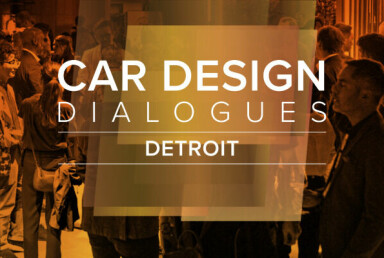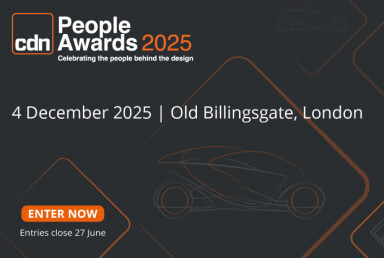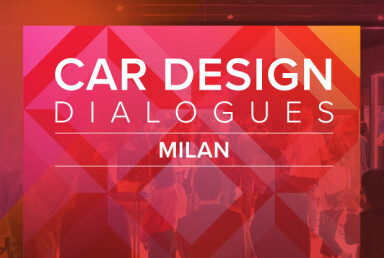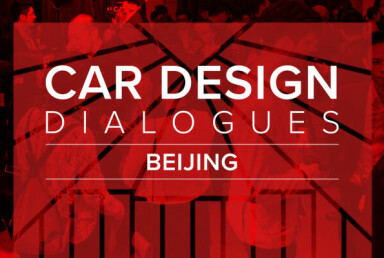User experience
Car UX in a "challenging" spot, says expert

Experienced UX specialist Chris Schreiner gives his take on the state of play in automotive
The world of user experience (UX) design has become a hot topic amid the new normal of touchscreens and button-minimal instrument panels. The vocal minority have reported teething pains, but are things changing for the better?
In many cases UX is seeing a similar shift to that of CMF, brought in earlier to the design phase and generally having a better say at the table. At least on the face of it. The other reality may be a lack of integration with the rest of the design teams, stymied innovation due to cost-cutting and more of a reactive than proactive approach to design.

Chis Schreiner has been in and around UX for most of his career, working at General Motors and Motorala as a human factors engineer before eventually addressing industry-wide issues at a large consultancy for more than 15 years. More recently, he co-founded his own consultancy where the focus is exclusively on automotive UX.
Speaking to Car Design News, Schreiner went over some of the key trends he and the team at User Driven Strategies are seeing. There are plenty of work-ons, but it is not all doom and gloom.
Car Design News: What is your general sentiment toward the state of automotive UX right now?
Chris Schreiner: One word would be "challenging." It's weird in automotive how much things change, but also how some things stay the same. There's a constant struggle between the actual UX design and then marketing, interior designers, accountants — you name it. Historically, UX doesn't come out on top in that discussion. Sometimes they do, but more often than not too many compromises are made.
CDN: So the original UX solution doesn’t quite appear as was initially intended?
CS: Automotive UX professionals are very talented and they largely know what should happen. And I only say ‘largely’ because sometimes we see a bunch of people are hired from the tech industry to design things for a car, without understanding all the human factors, safety implications and various other considerations.
It is often a case of doing the best you can to make it work
That's where it can go wrong: "Here's the vehicle, here's the infotainment system, and we've already decided what’s going to happen." The display might be too far away, there aren't good anchor points for the driver to steady themselves, and it is often a case of, “well, you have to do the best you can to make it work.”
CDN: That's not ideal.
CS: No, and that is largely where many of the legacy automakers are still at. Even with some of the newer brands and start-ups, you might see a large UX focus and team but once they release the vehicle, most of those UX people might get laid off.
CDN: What’s the downstream effect of that?
CS: If you think about software defined vehicles (SDVs), we should be able to fix all these issues along the way. But if you’ve released your system and then laid everybody off, that's not going to happen.

CDN: Are UX designers now being included early on in the design phase? And if not, what are the telltale signs of that?
CS: In a lot of cases I could look at an infotainment system and tell you how the company is organised, because it's very siloed and disconnected. Some have tried to have UX cut across each department, but more often than not these are still very large, very siloed organisations.
In my experience, design teams were once in a completely different campus and in a building to which I — a UX person — did not have access. It's hard to get involved if there isn't that coordination and communication.
CDN: We are seeing that, at least for some of the newer studios, UX is in the same room as the other design disciplines. For UX designers that are not in that situation, it must be quite frustrating at times?
CS: Yeah, it is frustrating. We often have feedback from UX guys saying how they appreciate our independent analysis of the situation... It’s not just the UX designer shouting in a meeting room.
It's hard to quantify the return on investment of a really good infotainment system
The other thing with the legacy OEMs, is that there is still a lot of give and take with the suppliers. Back in the day, I was at OnStar and spent a good year and a half designing its first navigation system. Then Motorola came in with something off the shelf, and the accountant said "okay, that's what we're using, because it will be a hell of a lot cheaper than doing our own from scratch." If your preferred supplier presents a solution that's simply "good enough" — or the people that hold the purse believe so – that's often what you go with.
CDN: Is that partly why some UX solutions do not currently hit the mark – it ultimately comes down to cost-cutting?
CS: Yeah, and anytime you want to invest in UX research or talent, it's hard to quantify the return on investment of a really good infotainment system.

CDN: To what degree is car UX being dictated by the latest hardware?
CS: It is certainly technology led but just because a new fancy technology becomes available, that doesn't mean it makes the user's life in the car that much better.
CDN: Could you tell me a little about how you and your team work with the automakers on all this?
CS: We work in a couple of different ways. We do our own UX research around the driver and passenger requirements — what they want versus what they really need, what they are willing to pay for, and do they use it? We explore all of that and provide recommendations to the OEMs, Tier 1s and other players in the ecosystem. We also run custom projects where we help evaluate a prototype infotainment system, working with their engineers or mediating between them and their suppliers.
CDN: Are there any common mistakes you're seeing across brands at the moment?

CS: Yeah. A big red flag for me is this conflict between minimalist interior design and the user experience. Cramming everything in the touchscreen where the ergonomics aren’t necessarily taken into consideration, button sizes and placements might not be optimal, and driving functions end up in a second layer menu. The conflict between having a clean interface and what’s best in terms of safety or user delight.
This is different in the showroom. That kind of look and tech-forward approach helps sell the car, but it doesn't give you a good experience afterwards.
CDN: Are there any other elements that could do with improvement?
CS: For me, all of the ADAS warnings and beeps just grate on me and there seems to be more focus on educating customers on how to turn things off than actually alleviating the problem in the first place.
CDN: Part of the selling point for the software-defined vehicle is that updates can be made quickly and easily, rather than ordering a physical recall and ripping something from the dash. Has that reality materialised yet?
CS: The solution that is chosen is often more of a band aid than a fix, as we just discussed. We also get called in after OEMs receive a poor J.D. Power score due to some UX faults. Oftentimes, we'd be able to tell them how to fix it – sometimes they would implement it, sometimes not for cost reasons – but that doesn't necessarily identify the root cause. Things end up getting fixed based on time, cost and their perceived impact, and suddenly that's out of the UX person's hands.
I do see good potential for a more streamlined and car-centric experience
CDN: In some cases, are UX designs essentially viewed as recommendations rather than defined solutions?
CS: They are certainly not always taken up 100% of the time, and it's all of those factors of cost, resources and other priorities that often end up with the solution being watered down.
CDN: Challenges aside, is there anything positive you're seeing on the UX front?
CS: I do see good potential for a more streamlined and car-centric experience where smartphone mirroring really isn’t necessary, especially if you reshape the initial login process. If we can make that a bit easier then we can achieve what the automotive industry has wanted all these years: to have control over an experience that is customised in their own way. Also, a QR code login process could be great, to be honest.

CDN: What do you think of the monopoly of CarPlay and Android Auto?
CS: I think what's important is that the OEMs have control over the experience and control – or at least access – to the data that comes from people interacting with their infotainment system.
CDN: What could automotive learn from other industries when it comes to UX?
CS: I hesitate to say what they could learn from other industries, because automotive has a unique safety aspect. In most other industries you're trying to draw attention and encourage interaction. You don't want that in the car.




